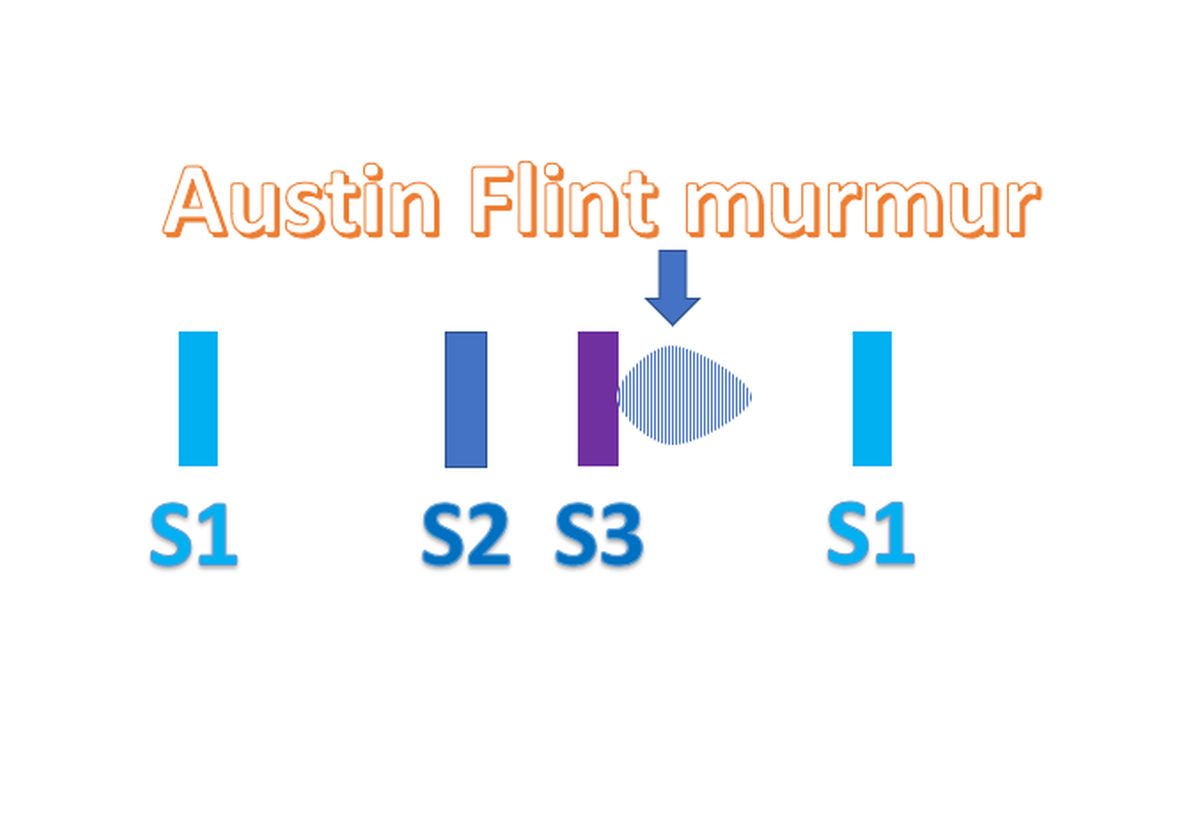Austin Flint murmur
Austin Flint murmur

Austin Flint murmur is the mid diastolic murmur heard in mitral area in a case of severe aortic regurgitation. Original description of the murmur was way back in 1862 [1]. Austin Flint thought that the mitral leaflets floated back to the closed position as the left ventricular diastolic pressure rose due to severe aortic regurgitation. Atrial systole produced re-opening of the mitral valve and the accompanying vibration of the anterior mitral leaflet produced the presystolic murmur.
But in 1965, Wigle ED and Labrosse CJ showed that there is a reverse gradient between left ventricle and left atrium in those with severe acute aortic regurgitation and Austin Flint murmur [2], thereby countering the mechanism suggested by the original author. Lochaya S, Igarashi M and Shaffer AB suggested that the reverse gradient leads to diastolic mitral regurgitation, which is probably the cause of Austin Flint murmur [3].
Further recent insights into the mechanism of Austin Flint murmur has been discussed in an earlier post.
References
- Flint A. Amer. J. Med. Sci. 1862; 44: 29.
- Wigle ED, Labrosse CJ. Sudden, severe aortic insufficiency. Circulation. 1965 Nov;32(5):708-20.
- Lochaya S, Igarashi M, Shaffer AB. Late diastolic mitral regurgitation secondary to aortic regurgitation: its relationship to the Austin Flint murmur. Am Heart J. 1967 Aug;74(2):161-9.

